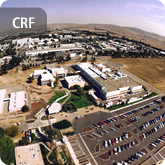The term clean coal refers to a number of initiatives that seek to reduce or eliminate the hazardous emission or byproducts that result from using coal to generate electrical power. Burning raw, pulverized coal emits sulfur dioxide (SO2), nitrous oxides (NOx), mercury, and fine particulate matter. Carbon dioxide (CO2) is always a byproduct of combustion. Clean coal technologies
- Reduce or eliminate hazardous emissions,
- Sequester CO2 to slow the effects of global warming,
- Maximize power plant efficiency,
- Reduce water use and discharge,
- Increase plant reliability, and
- Lower plant capital costs.
Newer technologies employ recently discovered material properties like supercriticality to increase efficiency. A supercritical fluid is any substance at a temperature and pressure above its thermodynamic critical point (temperature and pressure conditions where phase boundaries cease to exist). Close to the critical point, small changes in temperature or pressure result in large changes in density, allowing many properties to be “tuned.” Water is the common supercritcal fluid used for power generation. Raising a power station’s operating temperature greatly improves its efficiency. The efficiency of any heat engine depends on the temperature difference between heat source and sink (the Carnot cycle). Using current technology to take coolant water into supercritical conditions raises efficiencies from approximately 39 percent for subcritical operation to nearly 55 percent using current technology.
 ECIS Highlights
ECIS Highlights













 RSS
RSS Google+
Google+ Twitter
Twitter Facebook
Facebook LinkedIn
LinkedIn YouTube
YouTube Flickr
Flickr